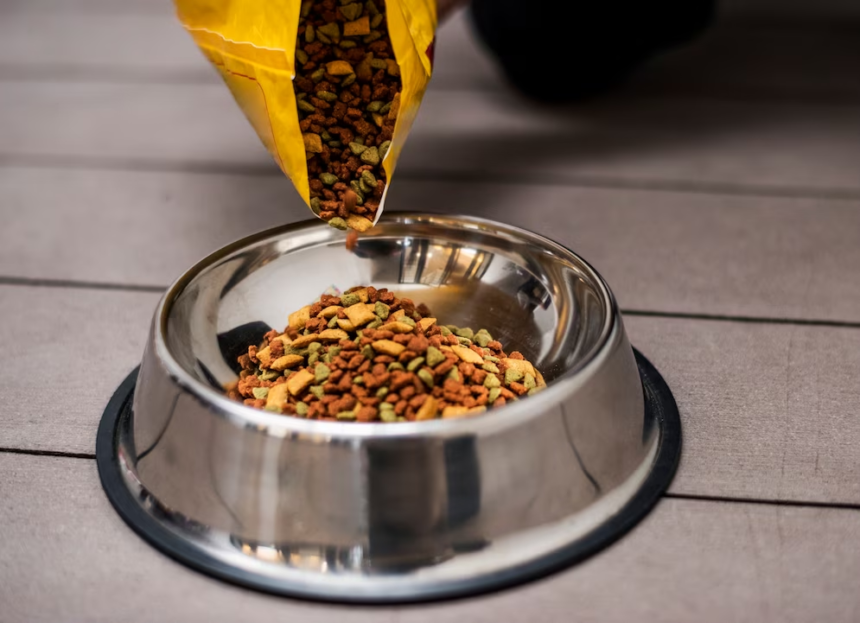Title: Saving on Pet Food: Affordable Alternatives and Smart Shopping Tips
Introduction: Pet owners understand the importance of providing high-quality food for their furry friends, but the cost of pet food can add up quickly. However, with some smart shopping strategies and knowledge of affordable alternatives, you can save money on pet food without compromising your pet’s nutrition. In this article, we will explore various ways to save on pet food, including affordable alternatives, smart shopping tips, and cost-effective feeding practices.
- Compare Prices and Shop in Bulk: Before making a purchase, compare prices across different pet food brands and retailers. Look for discounts, promotions, and loyalty programs that can help you save money. Buying pet food in bulk is often more cost-effective, as larger packages tend to have a lower price per unit. However, make sure to consider your pet’s consumption rate and storage capabilities to avoid food waste.
- Consider Store Brands and Generic Options: Store brands and generic pet food options can provide a more affordable alternative to premium brands while still offering balanced nutrition. These products often meet the same nutritional standards as their more expensive counterparts but at a lower price point. Read the ingredient list and nutritional information to ensure they meet your pet’s dietary needs.
- Look for Sales, Coupons, and Promotions: Keep an eye out for sales, coupons, and promotions offered by pet food manufacturers and retailers. Subscribe to newsletters or follow social media pages of pet food brands to stay informed about discounts and special offers. Additionally, look for printable or digital coupons that you can use at the checkout. These savings can add up over time and help reduce your pet food expenses.
- Consider Homemade and Raw Food Options: Preparing homemade meals or feeding a raw food diet can be a cost-effective alternative to commercial pet food, especially for dogs and cats. However, it’s essential to consult with a veterinarian or a veterinary nutritionist to ensure that your homemade meals meet your pet’s nutritional requirements. This approach requires careful planning, proper ingredient selection, and regular monitoring of your pet’s health.
- Practice Portion Control: Feeding your pet the appropriate portion size can help stretch your pet food budget. Follow the recommended feeding guidelines provided on the packaging, adjusting the amount based on your pet’s size, age, activity level, and overall health. Overfeeding can lead to weight gain and potential health issues, which can result in additional veterinary expenses.
- Buy in Bulk from Wholesalers or Online Retailers: Consider purchasing pet food from wholesalers or online retailers that offer discounted prices for bulk orders. These suppliers often sell larger quantities at lower prices, which can be beneficial if you have multiple pets or if you have the storage capacity. Just ensure that the products are from reputable brands and meet the necessary quality and safety standards.
- Avoid Impulse Buying and Stick to a Shopping List: When shopping for pet food, it’s easy to get swayed by appealing packaging or new product launches. However, impulse buying can lead to unnecessary expenses. To save money, create a shopping list and stick to it. Focus on purchasing the essentials and resist the temptation to splurge on unnecessary items.
- Monitor Your Pet’s Health and Adjust the Diet: Regularly monitor your pet’s weight and overall health. By keeping your pet at a healthy weight, you can reduce the risk of obesity-related health issues and potential veterinary expenses. Consult with your veterinarian to ensure you are feeding the right type and amount of food for your pet’s specific needs. Adjust the diet as necessary to maintain optimal health and avoid unnecessary visits to the vet.
Conclusion: Saving money on pet food is possible with a little planning and smart shopping. By comparing prices, considering affordable alternatives, taking advantage of discounts and promotions, practicing portion control, and monitoring your pet’s health, you can provide quality nutrition for your furry friend while keeping your budget in check. Remember, your pet’s health and well-being should always be a priority, so consult with your veterinarian before making any significant changes to their diet.










